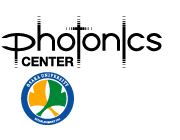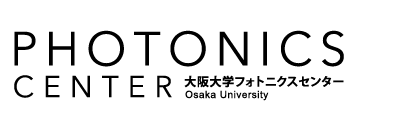Become a Photonics Partner
Become a Photonics Partner
As many of Japan’s major industries move overseas, optics and photonics technology represented by camera, CCD, and image-processing software even now are science and technologies and industries through which Japan continues to contribute to the world. Established in 2007, the Photonics Center Osaka University has 20 Osaka University research laboratories and optics and photonics-related corporate groups organically pursuing collaborative research with the aim of creating new photonics industries and markets. At the same time, the Photonics Center is providing opportunities for exchange and collaboration that will spark innovation, providing support for enterprises to develop revolutionary new products in the photonics field and create markets. The Center is fully equipped with cutting-edge evaluation equipment and prototype production machinery, with the intention of functioning in future as a “photonics cannery”. We broadly invite enterprises already involved with photonics-related technology and those that are considering entering this field in the future to become member corporations of the Photonics Center Osaka University. Together let’s create “Photonics Hills”—our own Silicon Valley—in Senrinooka, Osaka!Photonics Partners are enterprises and entrepreneurs who agree with the objectives of the Photonics Center and work together with us to generate innovation.
Photonics Partners pay annual membership fees, with membership entitling them to the use of cutting-edge resources, both hardware and software, access to which is possible only with the Photonics Center Osaka University. It is possible for example for members to utilize hardware resources like our “photonics cannery” as well as build innovative networks taking advantage of rich human resources and discover human resources in various photonics-related fields.What is the “Photonics Cannery”?
The Photonics cannery is the nickname for the Photonics Center’s shared experimental facilities. These facilities have the capacity to shrink the gap between basic research and manufacturing/industrialization and even go as far as researching and evaluating photonics-related products and producing prototypes. In a space of approximately 1000m3, this cannery has cutting-edge clear room facilities (100m2 x 4), 3D printers, NC processing equipment, thin film deposition equipment, etching equipment, pattern exposure systems, and focused ion beam processing equipment capable of microprocessing to a size of several tens of nanometers. Processes and devices in a broad range of fields—including integrated photonics, photonic materials, biophotonics, nanophotonics, and metamaterial–can be used. We would be pleased for these facilities to be used meaningfully for the creation of new industries and markets.Partnership Merits:
- technology consultation
- use of the photonics cannery
- building of human networks
- participation in various events
- e-learning courses//li>
- joint research



